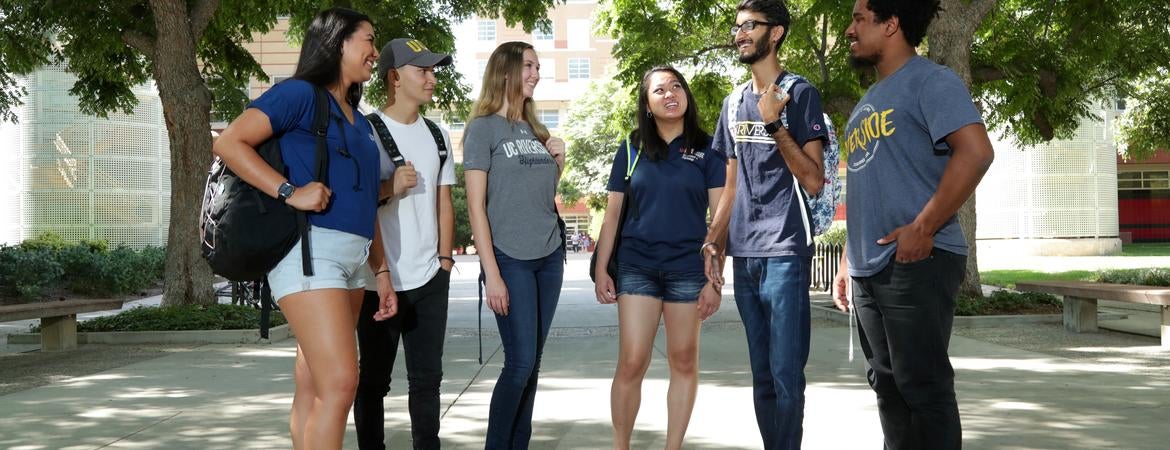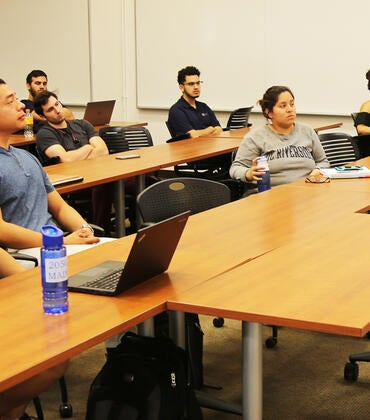
For many students of color, adjusting to college means navigating unfamiliar academic and social settings, often while also managing stress borne from experiences relating to race.
A UC Riverside study, which appeared in the journal Race and Social Problems, sought to better understand their experiences, to find what helped students to be more successful academically and what influenced maladaptive behaviors such as alcohol consumption.
The 2025 study found that female students of color who reported more exploration of their ethnic-racial identity also held higher GPAs. Male students of color who said they had more frequent positive conversations about race also held higher GPAs, while those who reported more frequent negative conversations about race reported more alcohol use.
“These findings suggest that the way that we're talking about race is important,” said Diamond Bravo, a UCR assistant professor of developmental psychology and the paper’s lead author. “Conversations about race are significant, and we should be thinking about them as developmental necessities.”
The study drew from over 1,000 racially diverse college students between the ages of 18 and 22. Researchers assessed whether exploring ethnic-racial identity, along with the frequency of positive and negative conversations about race, affected students’ GPAs and alcohol use. The study revealed gender-specific patterns that may help tailor programming to help students succeed.
“We wanted programming that is specifically centering people based on identity and lived experiences because they're more likely to benefit from them,” Bravo said.
The findings may point to ways universities can support students of color beyond traditional approaches. Ethnic studies courses or cultural events tailored to the student population are good first steps, but the authors also suggest broader approaches to supporting identity development and racial dialogue.
Bravo suggested that universities might invest in structured learning opportunities, such as community-based projects or cultural events that encourage students to explore their identities and engage in meaningful, guided conversations about race and ethnicity with peers and community members. Affinity spaces, such as culturally specific student organizations and peer-led dialogue groups, could also provide a setting for students to explore their identities and process their experiences with race in affirming ways.
Opportunities like these could be particularly helpful for women, since the study found that female students of color who explored their ethnic-racial identities were more likely to have higher GPAs.
Universities can best help male students by creating space for constructive dialogue, since the study found that men of color who had more positive conversations about race had higher GPAs and those who had more negative conversations tended to drink more alcohol. For example, the authors suggest that group therapy sessions or counseling that address race might provide opportunities for students to process their experiences in a productive and healing way.
“Many of us are really wanting to be mindful of how conversations about race are happening, but also noticing that we need some scaffolding,” Bravo said. “Why are we not educating ourselves on how to have positive conversations about race and facilitating that dialogue?”
Offerings that touch on both dialogue and identity exploration might include culturally responsive mentorship, in which faculty are trained to facilitate ethnic-racial identity conversations.
Universities might build on social support systems – both within and beyond affinity-based communities – that include identity-tailored mental health services, workshops, and speaker events. And providing opportunities to collaboratively build, share, and celebrate knowledge, such as cultural symposiums and campus-community dialogues, could create an overall more positive and inclusive campus experience.
Because, as Bravo said: "In today’s climate of ICE raids, deportations, and targeted hostility toward immigrant and undocumented youth, universities have a responsibility to facilitate positive and challenging conversations about ethnicity and race, and actively support ethnic-racial identity exploration and meaning-making — because we know these experiences directly shape students' adjustment, academic success, and overall well-being."
In addition to Bravo, authors for the article, "Positive and Negative Cultural Experiences Predicting GPA and Alcohol Use Among Racially Diverse Emerging Adults," included Chelsea Derlan Williams, Virginia Commonwealth University, or VCU, and the VCU Spit for Science working group; Elisha Arnold, New York University; and Danielle M. Dick, Rutgers University.



